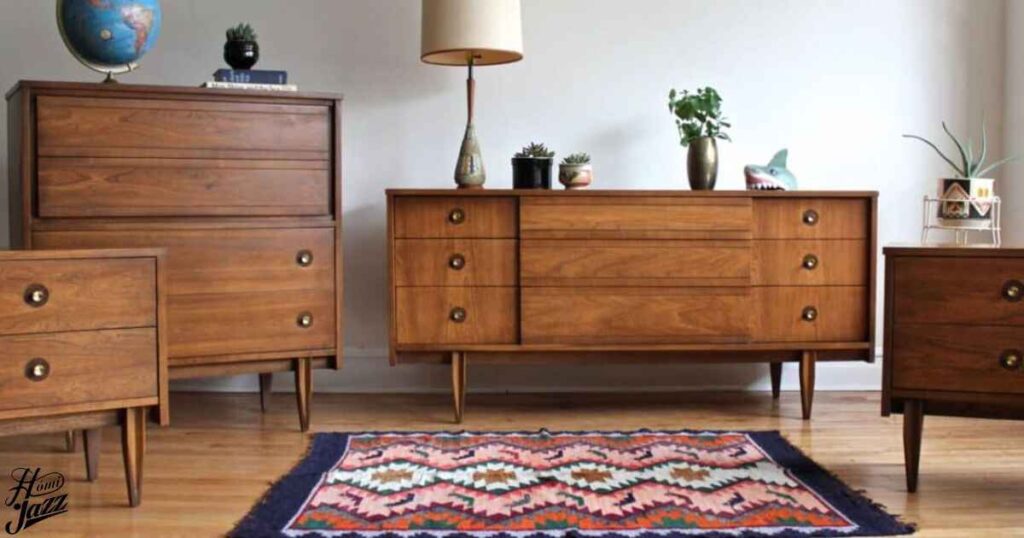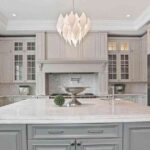Mid-century modern furniture has captivated design enthusiasts for decades. Its enduring appeal lies in its clean lines and functional elegance. This style emerged in the mid-20th century and continues to influence contemporary interiors.
What is MCM furniture? It’s a design movement that prioritizes simplicity and functionality. The style embraces organic shapes and innovative materials. It’s characterized by its minimalist design and focus on practicality without sacrificing aesthetics.
Origins and Evolution of MCM Furniture
The roots of mid-century modern furniture can be traced back to the early 20th century. It was heavily influenced by the Bauhaus movement in Germany. The style gained momentum in America after World War II.
Designers like Charles and Ray Eames pioneered new techniques in furniture making. They experimented with molded plywood and fiberglass. This led to iconic pieces that defined the MCM aesthetic. The style flourished from the 1940s through the 1960s.
Key Characteristics of Mid-Century Modern Furniture
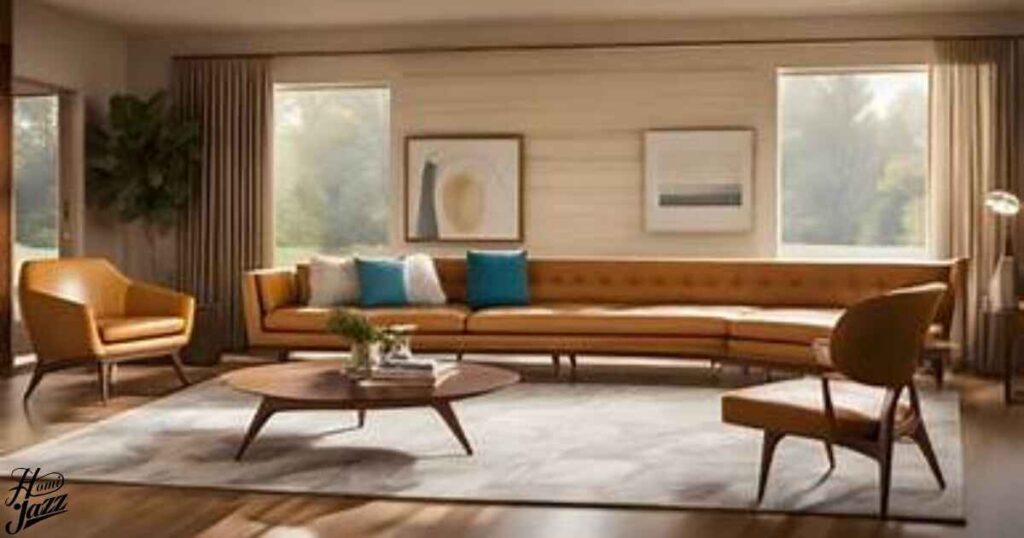
Clean lines are a hallmark of MCM furniture. Pieces often feature sleek silhouettes and uncluttered forms. This simplicity allows the beauty of materials and craftsmanship to shine through.
Organic shapes are another defining feature of mid-century modern design. Curved forms inspired by nature are common. These organic elements soften the overall look of MCM interiors. They create a harmonious balance with more geometric pieces.
Materials That Define MCM Furniture
Natural materials play a crucial role in mid-century modern furniture. Wood, especially teak and rosewood, is widely used. These woods are prized for their rich color and durability. They age beautifully, developing a patina over time.
Man-made materials also feature prominently in MCM furniture. Formica and chrome were revolutionary in their time. Designers embraced these new materials for their versatility and modern appeal. Plastic and fiberglass opened up new possibilities in furniture design.
Iconic Designers and Their Contributions
Several designers left an indelible mark on mid-century modern furniture. Hans J Wegner is renowned for his chair designs. His Wishbone Chair remains a beloved classic. Charles and Ray Eames created the iconic Eames Lounge Chair.
Eero Saarinen’s Tulip Chair exemplifies the futuristic aspect of MCM design. George Nelson’s Marshmallow Sofa pushed the boundaries of conventional seating. These designers’ works continue to inspire contemporary furniture makers.
The Influence of Scandinavian Design
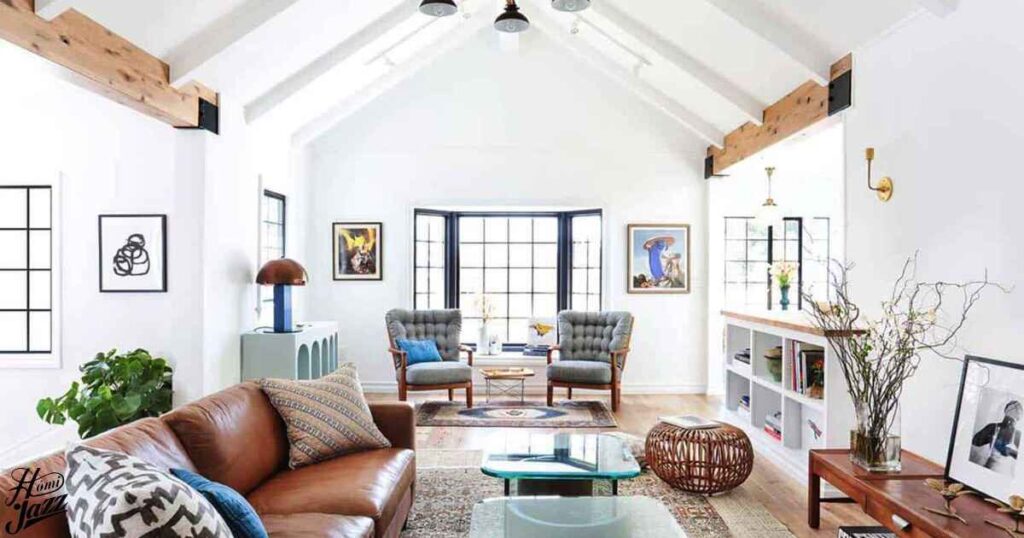
Scandinavian design greatly influenced mid-century modern furniture. Both styles share a focus on simplicity and functionality. Scandinavian design emphasizes light woods and muted colors. It brings a sense of warmth to the MCM aesthetic.
Finnish designer Alvar Aalto’s work bridges Scandinavian and MCM styles. His Paimio Chair combines bentwood techniques with a modern sensibility. This cross-pollination of ideas enriched the mid-century modern movement.
Color Palettes in Mid-Century Modern Design
MCM interiors often feature a mix of muted colors and bold accents. Earthy tones like olive green and burnt orange are common. These are often paired with neutrals like black, white, and wood tones.
Pops of vibrant color add visual interest to MCM spaces. A bright yellow chair or a red accent wall can enliven a room. This balance of neutral and bold creates dynamic, inviting interiors.
The Role of Furniture in MCM Interiors
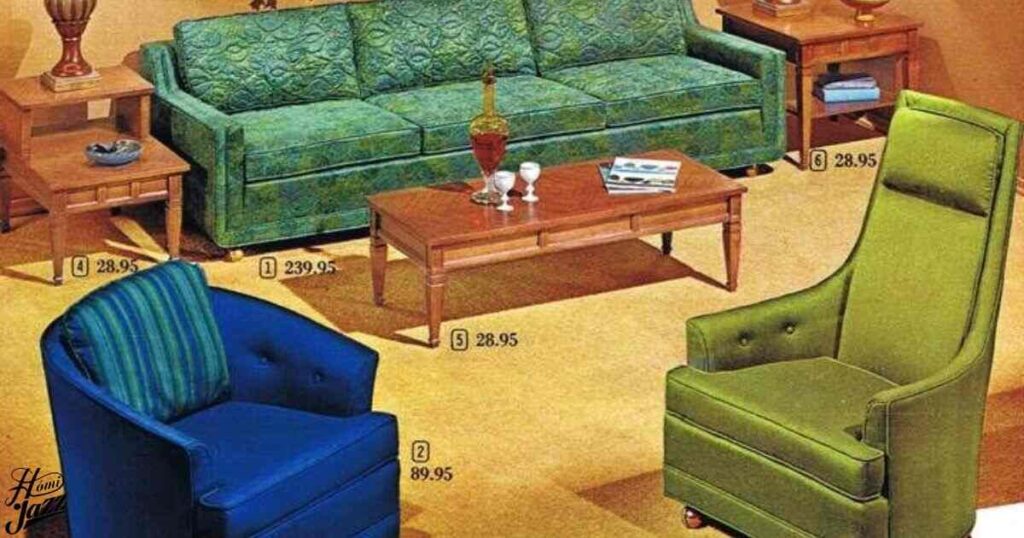
Mid-century modern furniture plays a crucial role in defining interior spaces. Open floor plans are typical of MCM homes. Furniture is used to delineate different areas within these open spaces.
Low-profile furniture is a key feature of MCM interiors. This style creates a sense of spaciousness and flow. It allows other design elements, like large windows, to take center stage.
Mixing MCM with Other Styles
One of the strengths of mid-century modern furniture is its versatility. It pairs well with a variety of design styles. MCM pieces can add a touch of retro chic to contemporary interiors.
Mixing MCM with Art Deco elements creates an interesting contrast. The sleek lines of MCM furniture complement Art Deco’s ornate details. This combination results in a sophisticated, eclectic look.
The Resurgence of MCM in Contemporary Homes
Mid-century modern furniture has seen a resurgence in recent years. Its timeless appeal resonates with modern homeowners. The clean, uncluttered aesthetic suits today’s lifestyles.
Many contemporary furniture designers draw inspiration from MCM principles. They create pieces that honor the past while looking to the future. This blend of old and new keeps the style fresh and relevant.
Sustainability and MCM Furniture
The enduring quality of mid-century modern furniture aligns with today’s focus on sustainability. Many MCM pieces were built to last. This durability reduces the need for frequent replacements.
The use of natural materials in MCM furniture is also eco-friendly. Wood, when sourced responsibly, is a renewable resource. This aspect of MCM design resonates with environmentally conscious consumers.
Collecting Vintage MCM Furniture
Collecting vintage furniture from the mid-century era has become popular. Original pieces by renowned designers can fetch high prices. However, more affordable options are available for enthusiasts.
When collecting vintage MCM furniture, authenticity is key. Look for maker’s marks and original labels. Research the designer and manufacturer to ensure you’re getting a genuine piece.
Read This Blog : How To Make Bathroom Smell Like A Spa
Incorporating MCM Furniture in Modern Spaces
Integrating mid-century modern furniture into contemporary interiors is straightforward. Start with a statement piece, like an iconic chair or sideboard. Build the room’s design around this focal point.
Balance is crucial when incorporating MCM furniture. Mix vintage pieces with modern elements. This creates a cohesive look that feels fresh and timeless.
The Impact of MCM on Modern Architecture
Mid-century modern design principles extend beyond furniture to architecture. Modern architecture often incorporates MCM elements. Large windows, open floor plans, and integration with nature are common features.
MCM-inspired homes emphasize indoor-outdoor living. They often feature expansive glass walls and multiple access points to outdoor spaces. This connection to nature is a hallmark of mid-century modern design.
MCM Furniture in Commercial Spaces
Mid-century modern furniture is not limited to residential settings. Many businesses incorporate MCM pieces in their offices and public spaces. The style’s clean lines and functional design work well in professional environments.
Read This Blog : How Long Will A Water Heater Last After It Starts Leaking?
Hotels and restaurants often use MCM furniture to create a stylish ambiance. The retro appeal of these pieces adds character to commercial interiors. It creates a memorable experience for customers and clients.
The Influence of MCM on Product Design
The principles of mid-century modern design have influenced product design beyond furniture. Geometric shapes and clean lines can be seen in everything from appliances to electronics.
Many contemporary products channel the MCM aesthetic. This includes lighting fixtures, tableware, and even tech gadgets. The enduring appeal of MCM design principles is evident in these modern interpretations.
MCM and the Art World
Mid-century modern furniture often shares space with abstract expressionism in art collections. The two movements emerged around the same time. They share a focus on bold forms and innovative techniques.
Many MCM interiors feature artwork from the same era. This creates a cohesive look that celebrates mid-20th century creativity. The synergy between furniture and art enhances the overall aesthetic.
Caring for MCM Furniture
Proper care is essential to maintain the beauty of mid-century modern furniture. Wood pieces should be dusted regularly and kept out of direct sunlight. Leather upholstery requires periodic conditioning to prevent drying and cracking.
For plastic and fiberglass pieces, gentle cleaning with mild soap is usually sufficient. Avoid harsh chemicals that could damage the material. With proper care, MCM furniture can last for generations.
The Future of Mid-Century Modern Design
As we look to the future, mid-century modern design continues to evolve. Contemporary designers are reinterpreting MCM principles for the 21st century. They’re using new materials and technologies while honoring the style’s core aesthetics.
The enduring popularity of MCM furniture speaks to its timeless appeal. It’s likely to remain a significant influence in interior design for years to come. The balance of form and function that defines MCM will always have a place in our homes.
Frequently Asked Question
What defines mid-century modern furniture?
Mid-century modern furniture is characterized by clean lines, organic shapes, and a focus on functionality. It often features natural materials like wood, as well as man-made materials like plastic and fiberglass.
When was the mid-century modern era?
The mid-century modern era generally spans from the mid-1940s to the late 1960s. However, its influence extends beyond this period.
Is mid-century modern furniture still popular?
Yes, mid-century modern furniture remains very popular. Its timeless design and functionality continue to appeal to contemporary homeowners and designers.
How can I incorporate MCM furniture into my home?
Start with a statement piece and build around it. Mix vintage and modern elements for a balanced look. Focus on clean lines and uncluttered spaces.
Are there affordable options for MCM furniture?
Yes, while original vintage pieces can be expensive, many retailers offer affordable reproductions. You can also find more budget-friendly vintage pieces from lesser-known designers.
Conclusion
Mid-century modern furniture continues to captivate design enthusiasts with its timeless appeal. Its clean lines, functional elegance, and versatility make it a perfect fit for contemporary homes.
From iconic pieces by renowned designers to affordable reproductions, MCM furniture offers something for every taste and budget. The style’s emphasis on quality materials and craftsmanship aligns well with today’s focus on sustainability.
As we look to the future, mid-century modern design principles continue to influence furniture makers and interior designers. The enduring popularity of MCM furniture is a testament to its ability to blend seamlessly with various design styles while maintaining its distinctive character.
Whether you’re a collector of vintage pieces or simply appreciate the aesthetic, mid-century modern furniture remains a relevant and inspiring choice for modern living spaces.

Howdy is behind this home blog, sharing personal stories, thoughts, and insights from daily life. I can dedicated to bringing you the latest trends, expert advice, and creative ideas to make your home the sanctuary you’ve always dreamed of. Whether you’re looking for DIY tips, home decor inspiration, home loans, rentals or renovations.

